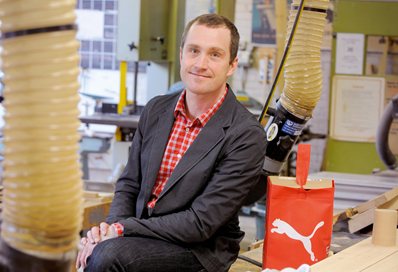JONATHAN CHAPMAN
Jonathan Chapman is a Professor of Sustainable Design and Course Leader of the MA Sustainable Design - a 'transdisciplinary' postgraduate course, which he co-wrote and launched (2009). Over the past decade, his teaching, consultancy and research have grown from their early polemical and activist roots, to developing strategic counterpoints to the unsustainable character of contemporary material culture. In addition to contributing to peer-reviewed books and research papers internationally, Chapman has been engaged in a broad range of consulting activities with world leading brands and renowned cultural institutes. He is a member of several sustainability advisory boards, and a co-founder of the Inheritable Futures Laboratory.Chapman has written two books; his monograph, Emotionally Durable Design: Objects, Experiences & Empathy (Earthscan, 2005) and his co-edited work, Designers, Visionaries and Other Stories: A Collection of Sustainable Design Essays (Earthscan, 2007). Since publication in June 2005, the term ‘emotional durability’ has been adopted by designers, students and educators around the world, providing valuable shorthand for the complex and manifold factors that determine the endurance of ‘value’ and ‘meaning’ in a given object.

Conference Synopsis:
You peer through last season’s Ikea blinds to see the neighbour’s parking space, where a sulking Dyson now garnishes a skip filled with construction rubble, dotted with the broken fragments of a once-craved avocado bathroom suite. Next to it, a sun-yellowed CRT monitor showing UV decay, like a scorched tourist nearing the journey’s end. We produce 40 tonnes of waste to make a tonne of products, and 98% of these products are dumped within just 6 months of purchase. In a world smothered in people and products, it must be questioned what – beyond a conventional understanding of functionality – is all this ‘meaningful stuff’ really for, and why does it transform into ‘meaningless rubbish’ so quickly?
This lecture challenges the throwaway society, presenting a broad panorama of design tools, methods and frameworks that build resilience into the relationships established between users and material things. Enhancing resource efficiency and brand loyalty by designing things that people want to keep for longer – an approach Professor Chapman calls ‘emotionally durable design’. This ongoing research has shaped design and business thinking at some of the world’s leading consumer brands, from sports products at Puma, to advanced electronics concepts at SONY and Philips.
What is ‘emotionally durable design’?
Emotionally durable design is an approach to design that reduces the consumption and waste of natural resources by increasing the resilience of relationships established between consumers and products. Professor Chapman established this theory in his book, Emotionally Durable Design (2005); describing how the process of consumption is, and has always been, motivated by complex emotional drivers, and is about far more than just the mindless purchasing of newer and shinier things; it is a journey towards the ideal or desired ‘self’, that through cyclical loops of desire and disappointment, becomes a seemingly endless process of serial destruction. The emotional durability of a product can be influenced through a range of means. In particular, by considering the following 5 points:
- Narrative: users share an evolving history with the product
- Consciousness: the product possesses free will, a mind of its own
- Attachment: users feel a strong emotional connection to the product
- Fiction: the product sustains mystery and holds attention
- Surface: the product ages well and develops character through use

